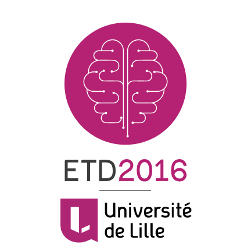This work has the objetive of examining Brazilian ETD programs in terms of how they participate in the international scenario and also of their adoption of current trends – research data available with the works (that used them), alternative media files along with conventional text and the use of social media for the repositories.
ETD programs are well established in Brazil. BDTD – Biblioteca Digital de Teses e Dissertações, the Brazilian national consortium, was created 15 years ago. Currently, there are 101 cooperating institutions and the number of metadata records hosted by the union catalog is 371,421 (238,428 M and 132,993 D); data available on Jan 29, 2016. The institutions are located in all regions of the country; they are public, private and communitarian universities. Some are large and traditional, and others are small and new.
The programs are also quite different from one another. One obvious difference is in the numbers of ETDs they have. The table shows the numbers of programs counted by numbers of ETDs on their repositories. Only 84 contribute with metadata records to BDTD.
Numbers of ETDs Numbers of Programs
over 50,000 1
40,001 – 50,000 1
30,001 – 40,000 0
20,001 – 30,000 3
10,001 – 20,000 3
5,001 – 10,000 8
3,001 – 5,000 10
2,001 -3,000 3
1,001 – 2000 14
501 – 1,000 9
101 – 500 24
under 100 8
Other differences are on the way institutions make they research results available to the public. Currently, many have Institutional Repositories. Some have one repository for both (ETDs and other works) while other have separate systems.
All over the world institutions are stimulating authors to publish in open access and to make available their research data. Even if not all works are in open access, metadata records are open to harvesters and repositories are listed in open access diretories, as for example ROAR (http://roar.eprints.org/) and OpenDoar (http://www.opendoar.org/). This work will examine:
(1) The numbers of Brazilian ETD programs and of other Brazilian repositories listed on them the open access directories. Other diretories may be examined too.
(2) How Brazilian ETD programs and other Brazilian repositories are ranked on the Webometrics ranking of web institutional repositories (http://repositories.webometrics.info/).
At the same time, the international scenario has changed a lot. A trend is that of making research data be made available with the ETDs that used them – this topic was addressed in ETD 2015. Ten years ago, in 2006, NDLTD selected a Cal Tech doctoral dissertation for an innovative ETD award because the author made his research data available along with his PhD work. In 2015, PUC-Rio started publishing research data along with ETDs (and even with articles) – are there other Brazilian institutions doing this? This is another question this work will try to answer.
Another interesting topic to be addressed is the use of social media to “advertise” ETDs and other scholarly communication. The work will examine which repositories use FaceBook, Twitte, G+.

 PDF version
PDF version
